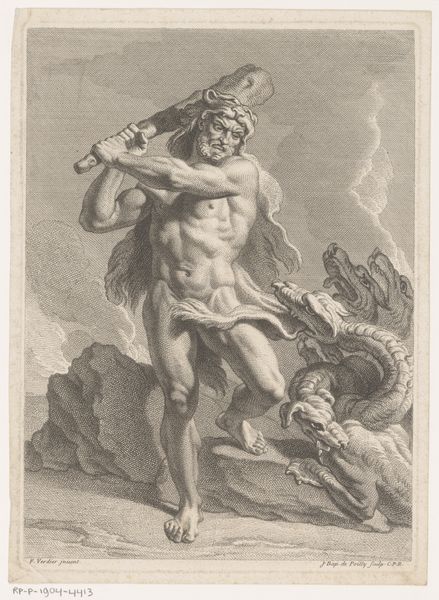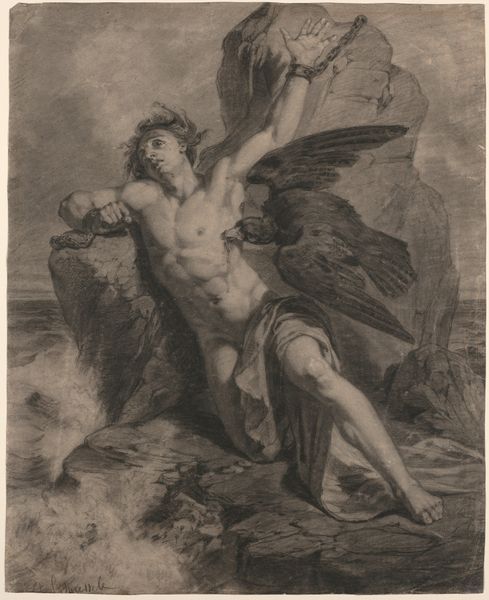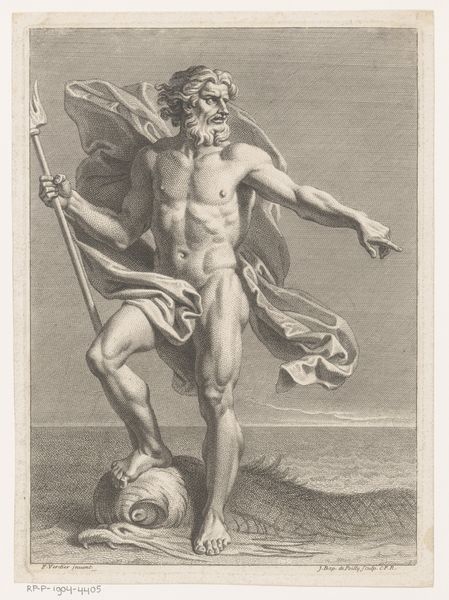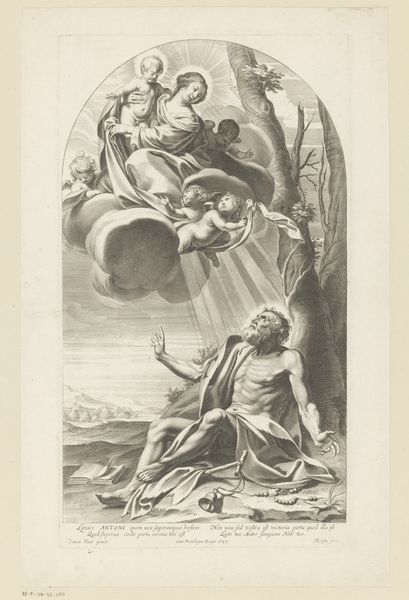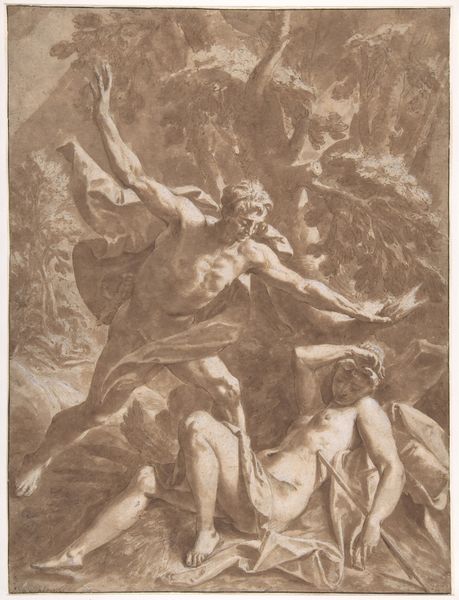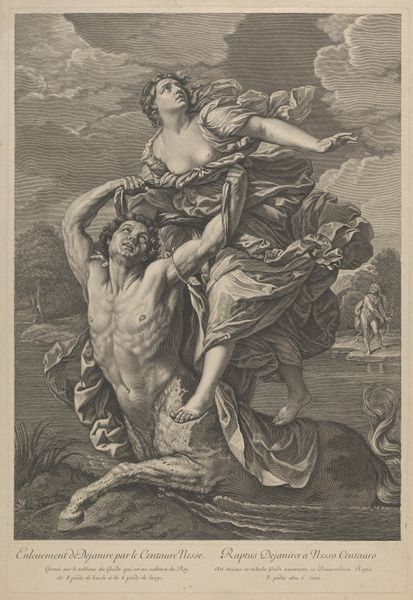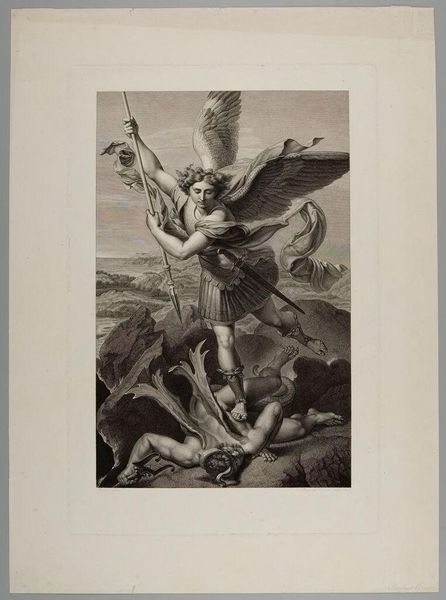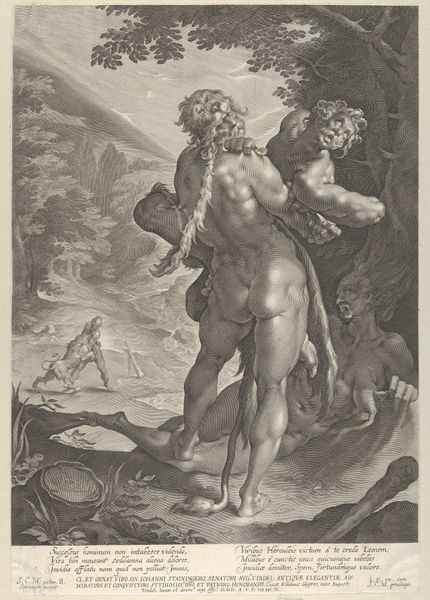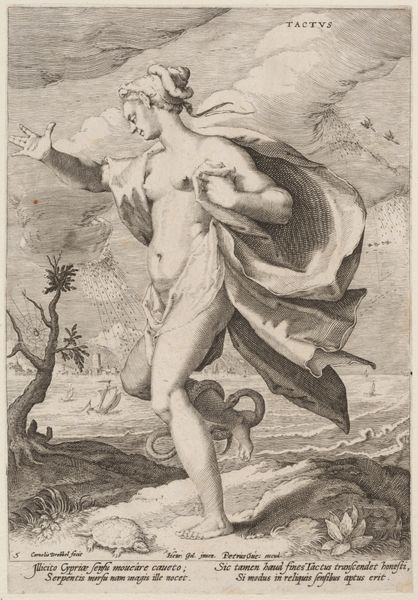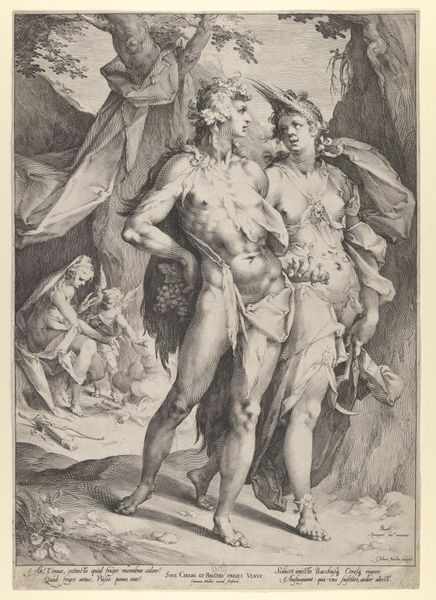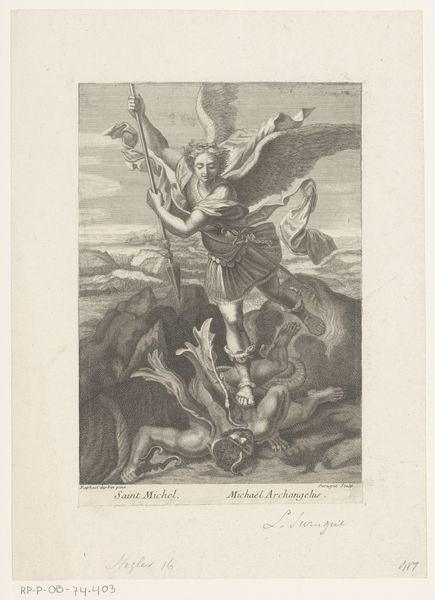
metal, engraving
#
baroque
#
metal
#
greek-and-roman-art
#
figuration
#
geometric
#
line
#
history-painting
#
nude
#
graphite
#
engraving
Dimensions: height 258 mm, width 194 mm
Copyright: Rijks Museum: Open Domain
Curator: This engraving, "Atlas draagt het hemelgewelf," was created between 1679 and 1728 by Jean-Baptiste de Poilly. What do you make of it? Editor: The sheer muscularity! And that globe—it feels almost weightless on his shoulders, a stark contrast to the implied burden. I immediately think of power structures, maybe divine punishment, but also incredible endurance. Curator: The material itself speaks volumes. The precise, uniform lines achieved through engraving—the tools and skills required to render the human form, the heavens—suggest a mastery of both craft and knowledge valued by institutions like the French Royal Academy of Painting and Sculpture, where Poilly worked. Editor: Precisely. The subject matter, Atlas, immediately links it to classical Greek and Roman narratives. But look at the tools near his feet—a book with geometric shapes, drawing instruments—they signify knowledge production. Doesn't it suggest a changing role for mythological figures within academic circles? Curator: Interesting. Consider the process; copperplate engraving allowed for the mass reproduction and distribution of imagery. It brought mythological stories to wider audiences and served as a means of disseminating specific cultural values. Editor: Absolutely. Think about the Baroque period too; the drama of light and shadow plays upon Atlas’s form, emphasizing his suffering. Yet the distribution via prints subtly shifted access and reception of imagery. Was this a piece meant to intimidate through sheer skill or to edify through its accessible form? Curator: Perhaps both. De Poilly demonstrates skill in employing standardized methods, crafting a material object meant for wider dispersal, thereby flattening the hierarchy and changing reception. Editor: A fitting consideration for an image of Atlas himself; carrying the weight and yet contributing, perhaps unknowingly, to a redistribution of visual power. Curator: It is fascinating how a focus on the labor involved gives another angle on the piece.
Comments
No comments
Be the first to comment and join the conversation on the ultimate creative platform.
